Our International Projects: Ireland
At Metalesa we have always been very clear about our main objective: improving the quality of people’s lives through our protection systems. Our job is to collaborate in the development of infrastructures that allow this goal to be met.
Currently, our areas of activity are: Road Safety, Mobility & Smart City, and Acoustics. In all of them, we are specialized in the development, engineering, manufacture and marketing of products for road, urban and railway equipment.
In addition, our export vocation has allowed us to protect people in different countries. Through the commercialization of our solutions we have been able to carry out the quality of our products to international markets, exporting to more than 40 countries on 4 continents.
Precisely, in today's article we want to talk to you about two of our international projects, specifically some that we have recently concluded in Ireland.
META13 parapet, the most complete containment system in its range
We present two projects with two aspects in common: They are in Ireland and in both cases the infrastructures were equipped with the META13 Parapet, our H2 containment level model
Works were carried out on the N25 New Ross Bypass roads in 2019 (1,1775 meters from META13) and on the M11 Gorey to Enniscorthy in 2018 (220 m from META13). We are very proud that Metalesa has participated in these international projects and that our products are contributing to the improvement of road safety beyond our borders.
We leave you the spectacular images of both projects
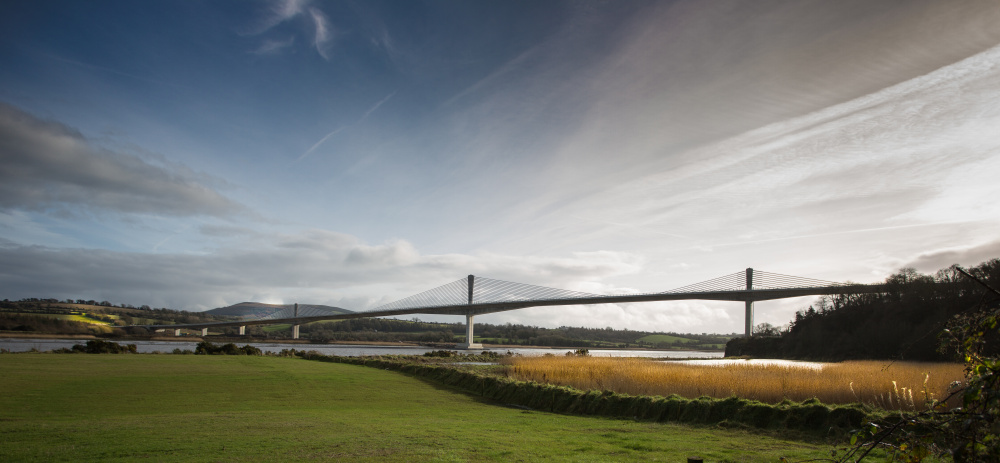
N25 New Ross Bypass
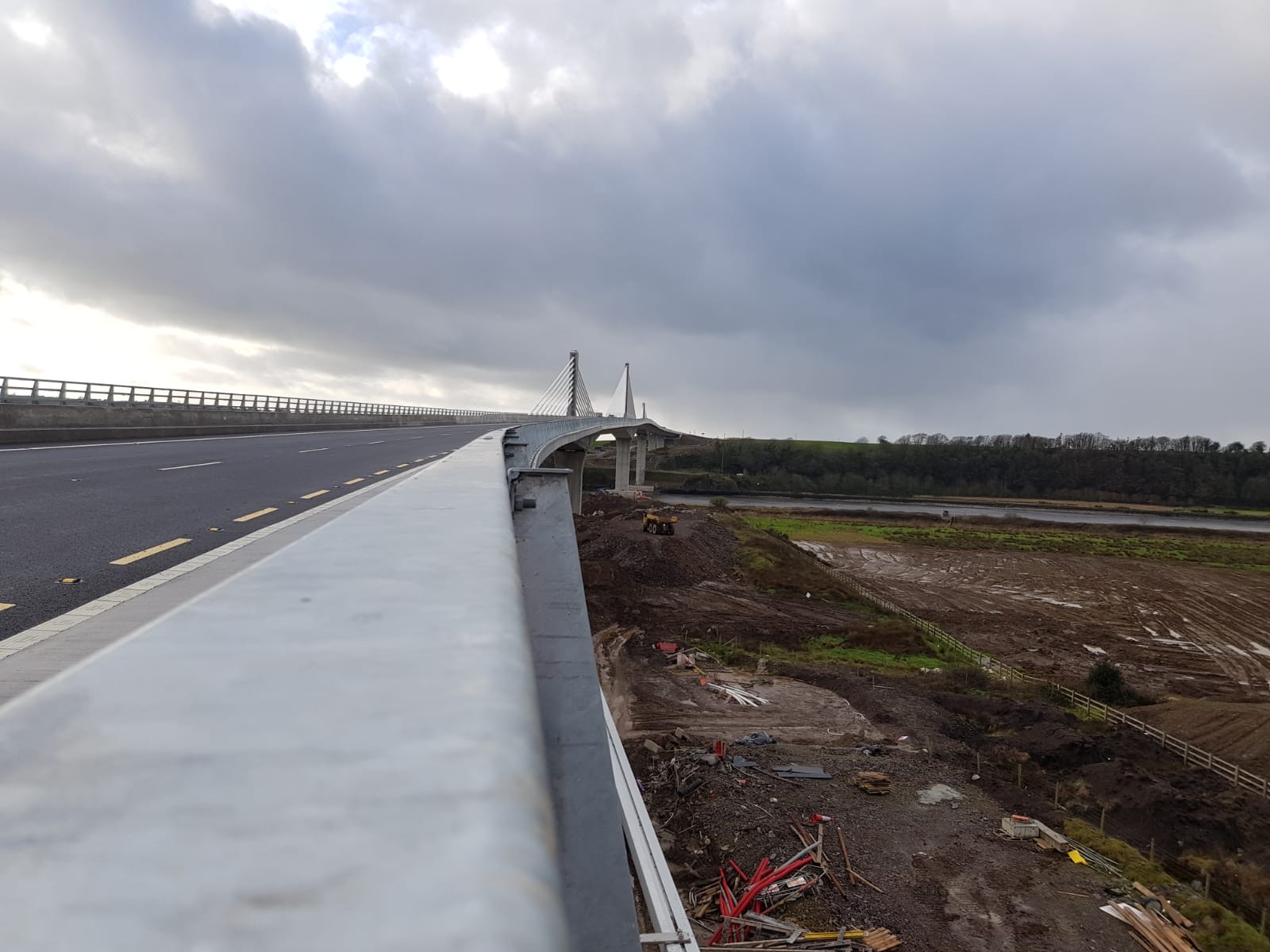
N25 New Ross Bypass
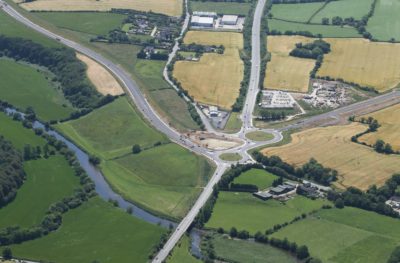
M11 Gorey to Enniscorthy
Features of the META13 parapet
The META13 steel parapet is a vehicle containment system designed for installation on the edges of bridge decks, grade-separated crossings, supporting wall crowns, and similar works.The device is approved according to Standard UNE EN 1317 Parts 1 and 2 that, together with compliance with Part 5 regarding production control, has obtained the CE marking.
Something that favors the possibility of installing our parapets in Ireland is precisely the creation of this regulation, since since 2011 it is mandatory that vehicle containment systems installed in the European Union be certified under the UNE EN 1317 standard. sense, the acceptance criteria after passing the rigorous tests to which the parapets are subjected, are the same for the entire European Union.
If you want to know more about the UNE EN 1317 Standard, we recommend you read this article.
Here are some of the advantages of the META13 steel parapet:
- Reliability of the containment system following testing in the worst possible scenario on a cantilevered bridge deck.
- The reduced dynamic deflection DN=0.6 m and the excellent working width WN=0.8 m (W2) of the system mean that it can be installed on supporting elements of optimised dimensions.
- These properties allow for the installation of acoustic screens and vandal-proof fences at very short distances from the parapet.
- System with shear anchor. In the event of a collision, it is rapid, simple and cheap to replace, with no structural alterations to the bridge deck.
- Simple assembly due to its small number of components.
- Can be transformed into an H3 system.
- System versatility, as it can act as both a vehicle and a pedestrian containment system by installing a grille.
- Alternative anchoring systems can be adapted for existing bridges.
- Hot-dip galvanising of all its components according to Standard EN 1461.
- Powder coating in the different standard colours of the RAL chart.
Our vision: an international future
Just as we have our mission clear, our vision too:
"We aspire to become a customer-oriented company with international recognition, anticipating the future of the sector."
And it is that our projects in Ireland are just one example of our commitment to society to get our products to the whole world. We believe that innovation is the key to being able to continue offering the market safer systems with higher performance, for this reason, we have our own R&D team that is responsible for researching and developing new products.
If you want to know more about our international projects, or need to ask us anything about our products, do not hesitate to contact us. We will be happy to help you in your project.
World Environmental Education Day
Every January 26th we celebrate the World Environmental Education Day. Obviously, it is not a day of celebration but of awareness instead. As a society we have taken some steps to preserve the environment, but we still have a long way ahead.
On this very necessary day, we seek to sensitize society about the relationship between human development and the conservation of the planet. There two phenomena must go hand by hand, supporting each other and not in opposition as it used to happen a few decades ago. At Metalesa we believe that it is necessary to stop and reflect on this, because we care about people and improving their quality of life.
Origin of World Environmental Education Day
Let’s start by giving context to this article with a little background on World Environmental Education Day.
It has its origin in 1975, the year in which the International Seminar on Environmental Education was held in Belgrade (Serbia). At that event experts from over 70 countries participated and established the principles of Environmental Education within the framework of the United Nations programs. As a result of this milestone, known as the Belgrade Charter, the fundamental demands of Environmental Education were reflected.
Since then, every January 26th, all countries use this day to promote awareness-raising initiatives on regards for the Environment. Specifically, in Spain, the Environmental Documentation and Information Section of the CENEAM (National Center for Environmental Education) produces each year a guide to fundamental resources for environmental education, very useful to begin studying, deepening and investigating, and a basis on which to launch a series of environmental education programs and activities.
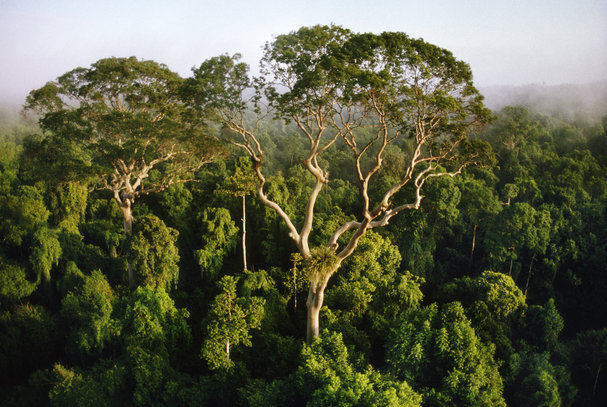
Objectives of environmental education
In general terms, Environmental Education aims to achieve the following goals:
- Awareness: Help people, both individually and collectively, acquire greater sensitivity about the importance of caring for the environment.
- Knowledge: To take care of the environment, you need to know how to do it. The population needs a basic understanding of what it means to be responsible for our environment and the resources we consume.
- Attitudes: It is essential to acquire values and promote interest in actively participating and protecting the environment.
- Evaluation capacity: Help social groups to evaluate the measures of environmental education programs.
- Participation: Help people develop their sense of responsibility by actively participating in this common goal.
Technology and Environment: an essential tandem
Human development understands that the people of a society can develop their maximum potential and lead a productive life according to their needs and interests. The increase in population, the increase in energy expenditure, the increase in the productive capacity of food … all this is very good, but we cannot ignore the fact that it also leads to environmental effects such as pollution, massive cutting of trees, depletion of water resources or global warming.
The mastery of technology to social evolution has meant that, in many situations, this development accelerates these negative consequences. However, it is also true that our actions, and how we use technology, may be part of the solution. But how can technology help reverse them?
Benefits of technology at the service of the Environment
Let’s see some examples of how technology contributes if we propose to improve the environment:
- Recycling: increase the volume of recycling and the efficiency of the recycling process of different activities and materials.
- Design of cities based on Smart Cities models: design of smart cities that satisfy the needs of the population with an optimization of the use of resources. We tell you more about Smart Cities by clicking on this link.
- Development of new forms of energy: friendly to the Environment such as wind or solar energy.
- Development of sustainable means of transport: fuel that respects the environment, such as cars or electric motorcycles.
This list could be very long, as long as the will of the whole of society wants it, because as we have said, an adequate use of technologies can have a positive impact on the protection of the Environment.
Our commitment to the environment
Every company should take into account its environmental footprint, that is, the impact generated by the service or product it offers.
At Metalesa we have always been aware of this. We know that as a company we must provide solutions and be innovative to satisfy one of the priority demands of society: the commitment to the environment and sustainability.
We achieve this task from different initiatives:
Installation of Thermo-lacquering and Zero Discharge Treatment Plant
Many of our products, for example our steel or aluminium acoustic screens, go through the thermo-lacquering process if the customer requires it. The process consists of applying a powder coating to a piece of metal that has been prepared, previously treated, and then cured in the polymerization oven.
Powder coating process is very respectful with the environment as it is a clean coating. The powder paint we use does not contain solvents, and the powder that does not adhere to the part is recovered for reuse. This use of almost 98% represents a reduction in the amount of waste generated.
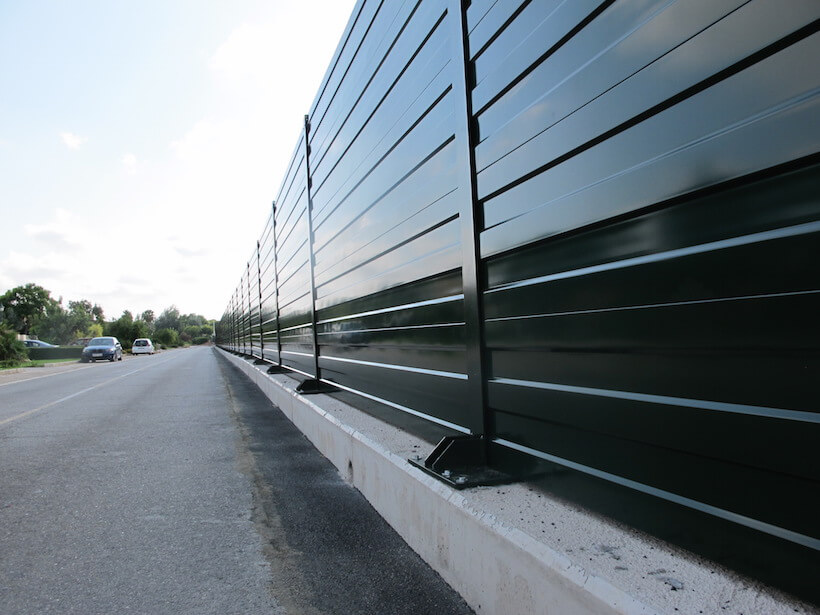
Regarding the zero discharge treatment plant, it is a technology that we use in our facilities in order to control waste and acquire a commitment to continuous improvement with sustainability. The zero discharge treatment plant allows us to contribute to the recovery of aquifers, since it allows us to reuse water in all our industrial processes through a cleaning process by electrolysis. in this way we manage to minimize the amount of water used and we manage to optimize all our resources.
Other initiatives in our facilities that favor sustainability
- Photovoltaic installation: At the end of 2020 we have installed a photovoltaic solar plant of up to 100KW of power on the roof of our factory. Technical studies estimate that with this installation we will produce up to 60% of the energy we consume per year in the development of our operations.
- Replacement of LED luminaires: In all the facilities of our factory we have installed LED lights, with this change we manage to reduce annual energy consumption by up to 15%.
- Replacing diesel trucks with electric trucks: For a long time all our trucks have been electric, therefore they do not produce CO2 emissions.
- We encourage the use of 0 paper: We try to spend as little paper as possible, and we achieve this thanks to the digitization process we are carrying out. We have managed to reduce the use of paper by up to 75%.
- Installation of EV charging points: This is one of the initiatives we have planned. We want to make different charging points for electric vehicles available to our employees throughout our facilities.
- Compliance with environmental standards and guidelines: Through our sustainable commitment, our intention is to achieve official accreditation of standards related to the Environment such as: Standards for Energy Efficiency Management Systems ISO 50001 or Carbon Footprint ISO 14067.
Our products: Acoustic Screens
One of our main products are acoustic screens, barriers specially designed to reduce a problem so harmful to people and animals, noise pollution. At Metalesa we manufacture all kinds of acoustic screens that fulfill their anti-noise function, but we have three models that are especially beneficial for our environment:
Metagreen Acoustic Screen
Rock wool is placed inside the plant screens, which, together with a green plastic mesh, facilitates the growth of vegetation in the style of a vine, generating in a few months a green acoustic wall, optimally integrated into the environment.
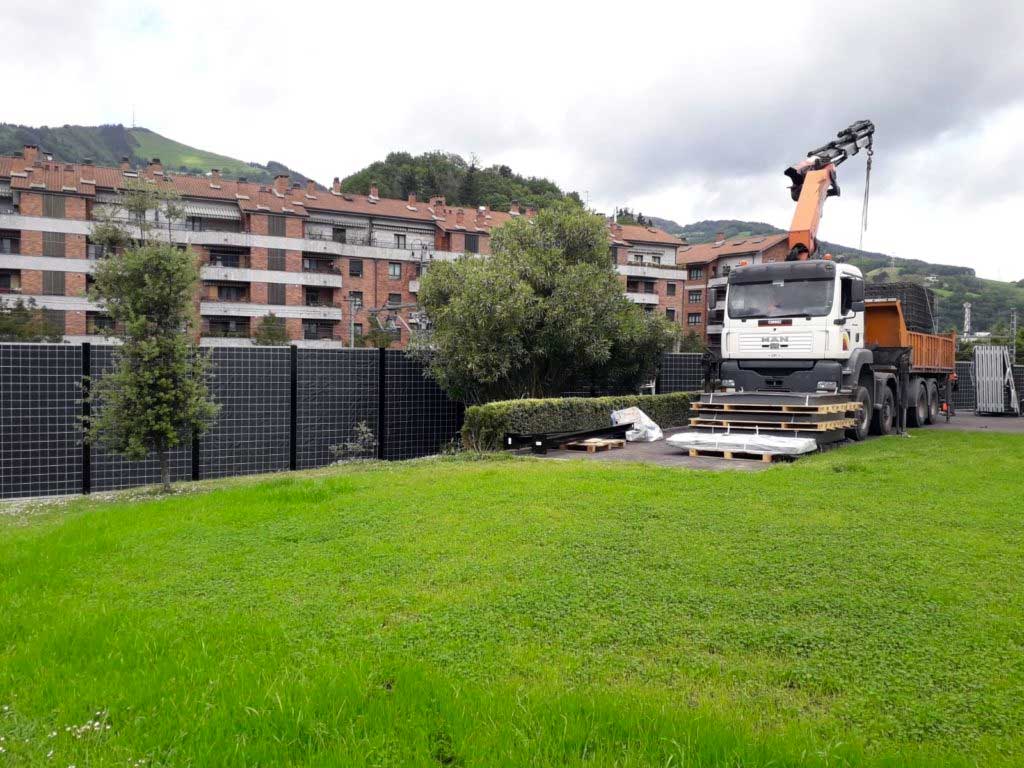
Bird Collision Screen
These types of acoustic screens are specially designed to prevent birds from colliding with vehicles or trains traveling on the tracks. This is how we achieve their preservation and protection of their migration routes.
Screens for wildlife passage
Screens for wildlife crossing are installed in overpasses equipped to protect the passage of fauna and livestock that circulate over roads or railroad tracks. These are wooden panels that are supplied with a chemical treatment that guarantees the preventive and curative action of insects and fungi, as well as solar radiation. Furthermore, the wooden panels optimize their integration into the environment.

To conclude, we will return to the task of World Environmental Education Day. To advance as a society, it is necessary to appreciate the Environment, and it is everyone’s responsibility to learn and internalize correct behaviors about it. Nature is not an inexhaustible source of resources, so we must all put our best efforts together to try to make our actions as less harmful as possible. From Metalesa we have already joined this objective. And you?

